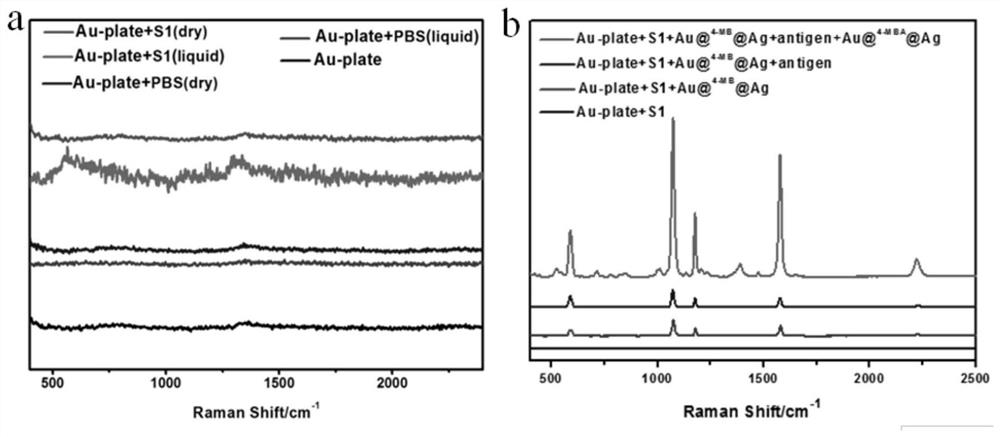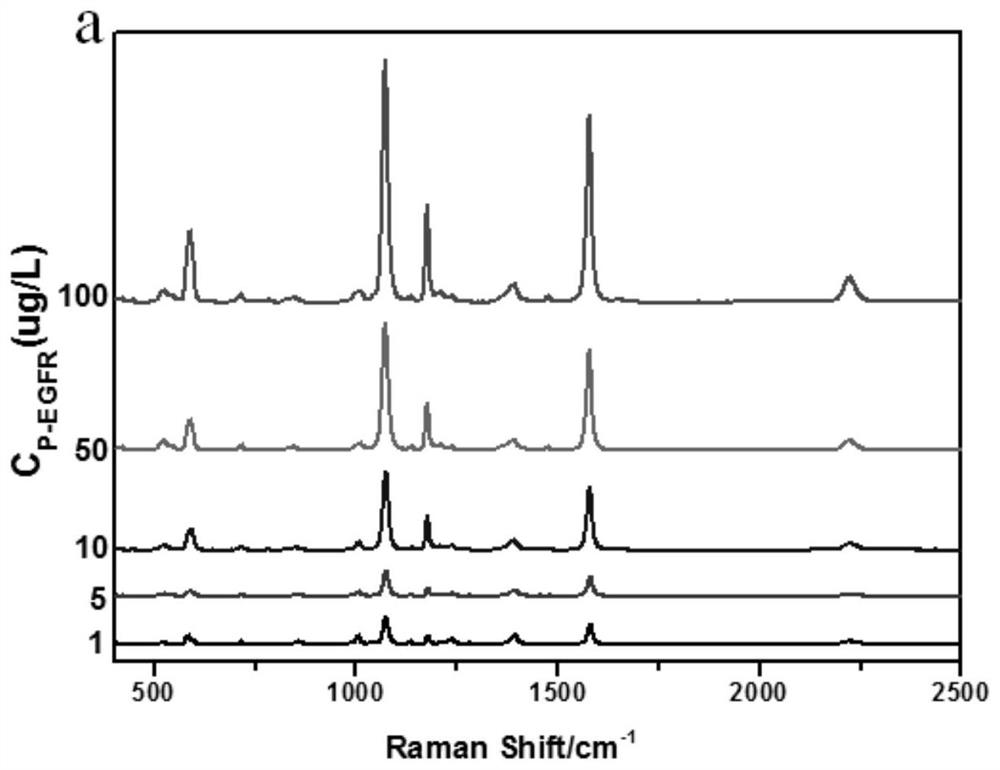A method for constructing sers spectral probe to detect breast cancer marker EGFR phosphorylated tyrosine
A breast cancer and phosphorylation technology, which is applied in measuring devices, biological tests, material inspection products, etc., can solve the problems of patients' risks and high prices, and achieve the effects of improving detection sensitivity, improving linear relationship, and ensuring reliability
- Summary
- Abstract
- Description
- Claims
- Application Information
AI Technical Summary
Problems solved by technology
Method used
Image
Examples
Embodiment Construction
[0031] The present invention will be further described below in conjunction with specific embodiments and accompanying drawings.
[0032] 1. Reagents Chlorauric acid solution (HAuCl4), sodium citrate (Na3C6H5O7), p-mercaptobenzoic acid (4-MBA), p-mercaptobenzonitrile (4-MB), ascorbic acid, silver nitrate (AgNO3), phosphate buffer solution (PBS, PH=7), phosphorylated serine dipeptide (PS-S), phosphorylated threonine dipeptide (PT-T), single-stranded DNA (S1: AAAATGTCCAAGGCT-SH, S2: TTTTACAGGTTCCGA-SH), Bovine serum albumin (BSA), anti-EGFR phosphorylated tyrosine antibody (Anti-EGFR(Phospho-Tyr1172) antibody), antigen EGFR phosphorylated tyrosine polypeptide (DNPDY(P)QQDFFP), EGFR non-phosphotyrosine acid polypeptide (DNPDYQQDFFP). 2. Preparation of the solution
[0033] The preparation of 1% chloroauric acid solution, the specific steps are as follows: First, dissolve the chloroauric acid solid powder in a beaker with ultrapure water, then pour it into a 100mL volumetric fla...
PUM
| Property | Measurement | Unit |
|---|---|---|
| particle diameter | aaaaa | aaaaa |
| concentration | aaaaa | aaaaa |
Abstract
Description
Claims
Application Information
 Login to View More
Login to View More - R&D
- Intellectual Property
- Life Sciences
- Materials
- Tech Scout
- Unparalleled Data Quality
- Higher Quality Content
- 60% Fewer Hallucinations
Browse by: Latest US Patents, China's latest patents, Technical Efficacy Thesaurus, Application Domain, Technology Topic, Popular Technical Reports.
© 2025 PatSnap. All rights reserved.Legal|Privacy policy|Modern Slavery Act Transparency Statement|Sitemap|About US| Contact US: help@patsnap.com



